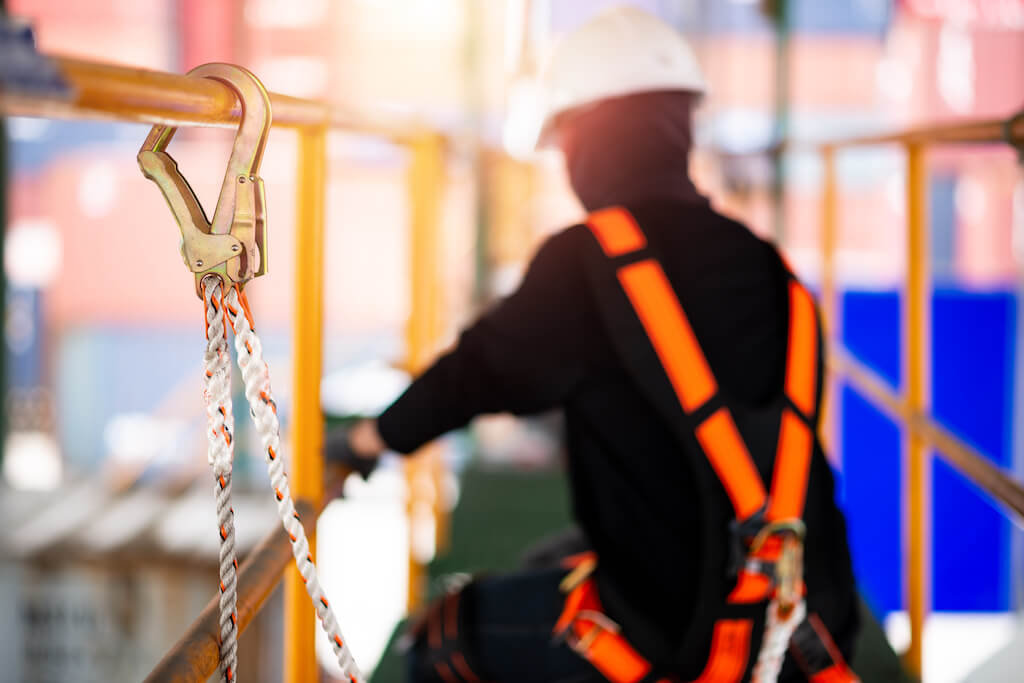
Top 10 Safety Tips for Working at Height
When working at heights, prioritize safety with a proactive approach. Tasks in construction, maintenance, or related fields demand meticulous risk management to prevent severe injuries or fatalities from falls. Adhering to comprehensive safety measures is crucial. Here are key guidelines for anyone working at height.
- Conduct a thorough risk assessment: Initiate every project at height with a comprehensive risk assessment. Identify potential hazards, assess associated risks, and implement controls to either minimize or eradicate these risks. This initial step lays the foundation for a robust and safe work plan.
- Choose the right equipment: The selection of appropriate safety equipment is paramount. This includes scrutinizing the quality and condition of ladders, scaffolding, fall arrest systems, and personal protective equipment (PPE). Rigorous adherence to safety standards and regular equipment inspections are non-negotiable.
- Train workers adequately: Invest time and resources in ensuring that workers are proficiently trained in equipment usage and acquainted with safety protocols. Training should encompass risk awareness, emergency procedures, and the correct utilization of safety gear. Regular refresher courses are key to reinforcing this knowledge.
- Use guardrails and barriers: Where feasible, integrate guardrails and barriers as your frontline defense against falls. These safeguards must not only be present but feature thoughtful design, secure installation, and undergo regular inspections. It’s not just about having barriers; it’s about ensuring they’re robust, reliable, and always ready to play their crucial role in averting accidents.
- Implement fall protection systems: When faced with situations where the installation of physical barriers proves impractical, lean on fall protection systems such as safety nets, personal fall arrest systems, or travel restraint systems. These aren’t mere precautions but pivotal safeguards, strategically designed to mitigate the impact of falls and act as a protective shield, preventing workers from enduring severe injuries.
- Inspect equipment regularly: Regularly scrutinize all equipment designated for work at height, be it ladders, scaffolding, or safety harnesses. Vigilance against wear, corrosion, or damage is crucial. Any identified faults should prompt immediate removal of the equipment for repair or replacement.
- Plan for emergencies: Develop and communicate emergency procedures specific to working at height. This may include rescue plans, first aid procedures, and communication protocols. All workers should be familiar with these plans to ensure a swift and effective response in case of an emergency.
- Avoid overreaching: When working at elevated heights, steer clear of overreaching for stability. Ensure your body’s center of gravity stays within the support base through strategic positioning. If accessing a work area proves challenging, think about adjusting equipment or trying alternative approaches to maintain a secure and controlled working environment.
- Weather considerations: Factor in weather conditions before commencing work at height. Wind, rain, or icy conditions significantly elevate the risk of accidents. Flexibility in scheduling to accommodate adverse weather ensures a safer working environment.
- Communicate effectively: Clear communication is crucial when working at heights. Use signals, radios, or devices to sync tasks and share hazard info swiftly. It’s not just routine—it’s proactive, preventing accidents and fostering smooth teamwork.
Mistakes to avoid when working in heights
Working at height demands meticulous attention to safety to mitigate the risk of accidents. Unfortunately, certain mistakes can compromise this safety, leading to severe consequences. Let’s highlight key mistakes to avoid when engaged in tasks at elevation.
- Neglecting proper training: A grave error is underestimating the importance of comprehensive training. Incomplete or inadequate training in equipment usage, safety protocols, and emergency procedures raises the specter of accidents. Ensuring each worker undergoes thorough working-at-heights training is non-negotiable for fostering a secure work environment.
- Inadequate equipment inspection: Overlooking a thorough equipment inspection before use poses a significant hazard. Be it ladders, harnesses, or scaffolding, dismissing signs of wear and tear compromises safety measures. Regular, meticulous inspections are imperative, promptly addressing any identified equipment issues.
- Ignoring weather conditions: Disregarding adverse weather conditions is a common oversight with profound implications. Wind, rain, or icy surfaces significantly escalate the risks of working at heights. Assessing and responding appropriately to weather conditions, even rescheduling work if necessary, is critical for maintaining a secure working environment.
Factors that hinder the process of working at heights
Engaging in tasks at heights brings forth complexities, introducing factors that can impede the process. The delicate balance between safety and efficiency necessitates strategic planning and heightened awareness. Addressing these challenges is imperative for cultivating a work environment that places a premium on worker well-being while ensuring optimal efficiency in tasks performed at elevation.
- Weather conditions: Unpredictable weather, with strong winds, rain, or icy surfaces, poses significant hurdles. These conditions compromise worker stability, increasing the risk of accidents and disrupting workflow. Navigating such weather demands heightened caution and adaptability, emphasizing the need for proactive safety measures and close monitoring of forecasts to maintain a secure and productive working environment at elevated heights.
- Inadequate training: Underscoring the significance of proper training is vital. Insufficient knowledge about equipment use, safety protocols, and emergency procedures not only hampers efficiency but also heightens the risk of errors and accidents at heights. Training is not just a requirement; it’s the cornerstone for a secure and streamlined execution of tasks at elevation, ensuring worker competence and minimizing risks in the working environment.
- Poorly maintained equipment: The condition of equipment significantly impacts safety and efficiency. Neglecting regular inspections and maintenance isn’t just a procedural oversight; it introduces the risk of malfunctions, potentially causing delays and heightening the danger of accidents. Prioritizing ongoing equipment integrity is not just a precaution but a fundamental responsibility, crucial for a secure and efficient working environment.







